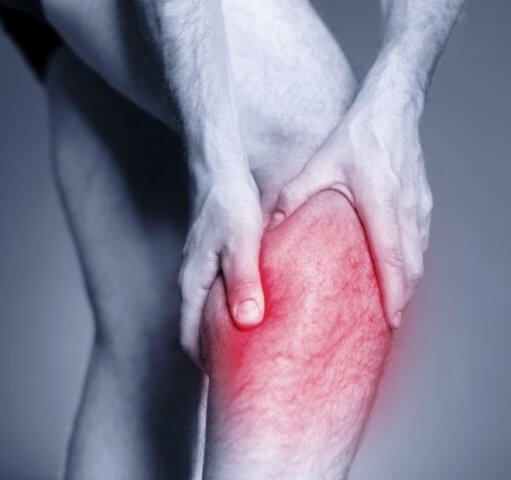venous diseases
postphlebitic syndrome
what is a PTS?
Post-thrombotic syndrome (PTS) is a complication that occurs as a result of deep vein thrombosis (DVT). The veins in our arms and legs have small valves inside that ensure blood flows properly back to the heart. Deep vein thrombosis is a blockage or clot that obstructs the vein and can cause the valves to fail.
Over a third of people who have deep vein thrombosis develop post phlebitis syndrome, whose symptoms include redness, swelling, ulcers and chronic leg pain. PTS can affect your mobility, so it’s best to take preventative measures. Most often DVT occurs in the legs.

What are the symptoms?
The most common symptoms of postphlebitic syndrome are:
Pain, swelling, and aching in the leg, which usually intensifies after long standing or walking and is relieved when resting or elevating the leg;
Heaviness in the legs;
Itchy feet;
Numbness of the legs;
Cramps in the legs;
Ulcers or sores on the feet;
If you develop any of these symptoms, especially if you know you have recently had a deep vein thrombosis, you should see an angiologist as soon as possible. He may diagnose postthrombotic syndrome based on these symptoms.
What are the reasons?
The main cause of PTS is when the valves and walls of the veins become damaged as a result of DVT. Prompt diagnosis and treatment of deep vein thrombosis is necessary to prevent this damage from occurring, as once the valves and walls of the vein are damaged, they cannot be repaired.
The valves of the veins are necessary to ensure that blood flows in an upward direction to the heart. They are extremely fragile and can be easily damaged. When the valves are damaged, blood can flow the wrong way. This is called reflux. This leads to a build up of blood in the veins in the bottom of our feet, causing swelling and discomfort.
The walls of the vein can also become damaged and leave consequences after DVT. When we do certain physical activities, such as walking, the blood flow through our veins increases. Injured veins don’t dilate like normal veins, so when blood flow increases and they can’t dilate, it causes throbbing pain and swelling in the bottom of our legs.
Eventually, this can cause damage to the skin of the foot. It becomes dry around the ankles, discolored and itchy. Later it becomes brown in colour, hard and rough to the touch. Then a small abrasion can turn into a bigger wound that doesn’t heal. This is called a venous ulcer.
In more severe cases, the vein can be so severely damaged that it is completely blocked. No blood can flow through it at all. This is the most serious type of post phlebitis syndrome.
complications
Complications of postphlebitic syndrome often develop when the condition is not treated promptly and effectively. When leg ulcers develop, they are extremely difficult to heal and can become infected. This threatens your mobility and in rare cases can lead to sepsis.
Postphlebitic syndrome is a condition that is difficult to treat. It usually causes discomfort and can lead to greater complications. Given that there is no cure for the condition, it is best to take measures to prevent its onset. The key to this is rapid diagnosis and treatment of deep vein thrombosis. The faster the clot breaks down, the less damage it will do to the valves and vein walls. Compression socks can be worn preventively in situations with a high risk of DVT, for example during a hospital stay or on long-haul flights.
Treatment
Treatment options vary depending on how severe the condition is. Treatment usually involves elevating the affected limb, exercise and compression therapy or socks. You may be prescribed blood thinners to prevent possible clots in the veins and pain medication.
Exercise
Elevate the affected limb while resting or sleeping. This helps the blood return to the heart using gravity. Exercises that involve ankle flexion and calf strengthening can also be helpful.
Compression socks
They are usually part of the treatment of postphlebitis syndrome. It is important to choose them well and ensure the right level of compression, so it is necessary to be prescribed by a specialist. Socks are made of special elastic fabric and put pressure on the ankle, which improves blood flow and reduces pain and swelling.
